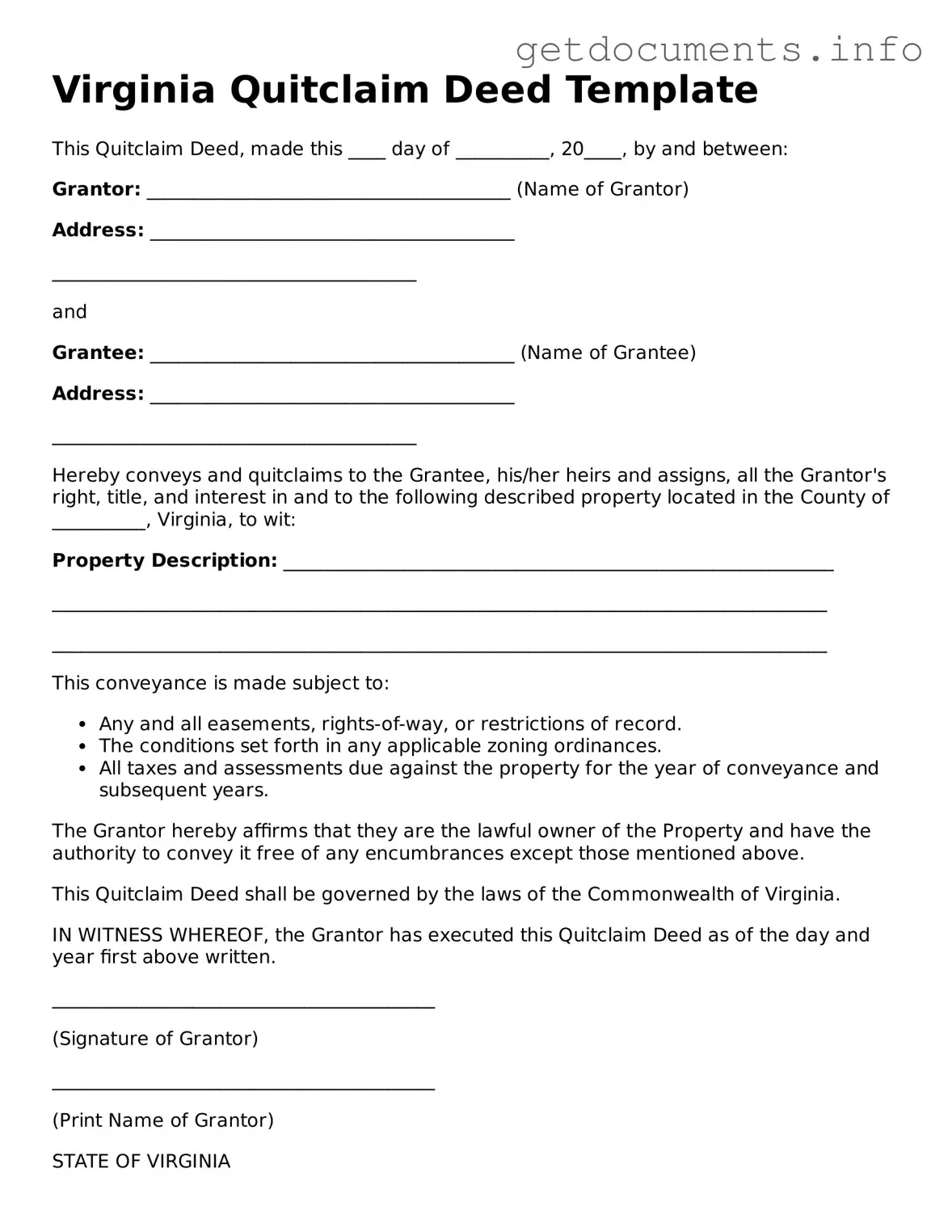The Virginia Quitclaim Deed is an essential legal document used in real estate transactions to transfer property ownership from one party to another without any guarantees regarding the property's title. This form is particularly useful in situations where the granter, or the person transferring the property, wishes to relinquish their interest without making any promises about the property's condition or any existing liens. Unlike other types of deeds, the Quitclaim Deed does not require a title search, making it a quicker and simpler option for transferring property rights. Commonly used among family members, in divorce settlements, or when gifting property, this form allows for a straightforward transfer process. It is important for both parties to understand that the Quitclaim Deed conveys only the interest that the granter holds, if any, and does not protect the grantee from potential claims by third parties. While the Quitclaim Deed is easy to execute, it is advisable to consult with a legal expert to ensure that the transfer meets all local requirements and to understand the implications of using this type of deed.
